In a recirculating NFT (Nutrient Film Technique) System the nutrient solution is pumped from a reservoir to the plant’s roots. The excess nutrient is then allowed to drain back to the same reservoir. This permits reuse of the nutrient solution until it is either depleted of useful elements or is contaminated. The nutrient solution is then discarded and replaced with fresh nutrient
There are several types of recirculating Hydroponic systems in use and there are also Non-Recirculating Hydroponics systems.
The most popular types of systems are:
-Nutrient film technique (NFT)
- Flood & Drain (Ebb & flow)
-Deep Water Culture (DWC)
- Aeroponics
-Satellite
In the second photos, we see Lettuce growing in what is referred to as a Raft made of polystyrene that floats on top of a container reservoir full of hydroponic nutrients. This is a basic Non-Circulating Hydroponic Method. The system is comprised of a water tight container to hold the nutrient solution, a framework or support stucture and the floating raft with Net Pots that hold the seedlings, which will turn into mature plants.
The rows of Tomatoes in the bottom picture are being grown in buckets that are fed the Hydroponic nutrients. Trellis netting supports the tomatoes that are great climbers. Growing tomatoes in buckets keeps them out of Flood and Drain Grow Beds where the roots can get over grown and clog up a Hydroponics system. Bucket Systems are known as Satellite Systems as Individual pots are top fed and contain multiple drain holes in their base to ensure complete drainage. Each pot is seated inside a second pot that acts as a sump to collect the waste nutrient. This arrangement is referred to as a “nested” pot. The ‘sump’ pot contains a drainage line that is either plumbed to waste, or back to the central nutrient reservoir pots are top fed and contain multiple drain holes in their base to ensure complete drainage.
What constitutes Hydroponic food and where does it come from? Hydroponic food growing technology may sound like a modern, new age way to grow food; but it has been in existence for centuries. The famous Hanging Gardens of Babylon, one of the seven wonders of the ancient world, are largely believed to have functioned according to hydroponic principles. During the 10th and 11th Centuries, the Aztecs developed a system of floating gardens that were based on Hydroponics; and Marco Polo indicated in his writings that he witnessed floating gardens in China in the late 13th Century.
Hydroponics is a method of growing plants using mineral nutrient solutions, in water, without soil. Plants can be grown by placing their roots in the mineral nutrient solution only or in an inert medium such as perlite, gravel, mineral wool or expanded clay that are flooded with water. As long as the required mineral nutrients are introduced into a plant’s water supply, soil is not needed for the plant to survive and bear edible food.
Formal research in an English speaking country did not begin until the 17th Century when Sir Francis Bacon, a British Scientist conducted research on soil-less gardening in the 1620s. His work was published after his death in 1627 and launched a wave of enthusiasm for Hydroponics. In 1699, another English Scientist, John Woodward, experimented with growing spearmint in various water solutions without soil.
Across the pond, a UC Berkeley Scientist, William Gericke, promoted the use of Hydroponics in commercial agriculture. He was able to grow huge tomatoes in his home using just water with nutrient solutions. He called this food growing technique “Aquaculture”; but upon discovering that the name aquaculture was already being used to describe the raising of marine animals, he changed the name to “Hydroponics”. Two other UC Berkeley Scientists, Dennis Hoagland and Daniel Arnon, expanded on Gericke’s work and in 1938 published what is still considered to be one of the most important texts ever written about Hydroponics, “The Water Culture Method for Growing Plants without Soil”. The following is a Link to this Book as a Free Flip Book.
So why are people turning to Hydroponics over soil for growing food? Firstly, Hydroponics allows people the option of growing food in places where soil farming is not an option due to challenging weather conditions. Dry, arid, deserts are the places where Hydroponics got its first firm foot hold. Secondly, it also offers people in urban areas where land is scare and expensive a workable alternative for growing food. That alternative is also attractive on island countries where land scarcity is an issue. So Hydroponics is the answer for providing vegetables to peopole who would otherwise have to eat, expensive imported food with lots of food miles hindering freshness. Thirdly, in countries where the growing season is short, a light and temperature controlled Hydroponic Greenhouse can lengthen it.
Another important plus regarding Hydroponics is it uses only about 10% of the water that traditional soil-based agriculture uses because the water is recycled and reused. Where water is scare, Hydroponics is one of the only answers for farmers. Hydroponically grown plants require little or no pesticides and only around 25% of the nutrients and fertilizers that soil-based plants require. Hydroponic agriculture brings farming home to the local community saving on transportation costs and reduces greenhouse gas use.
Hydroponically grown crops have an entirely different root structure than soil-based crops because they do not have to search for nutrients in the soil. The nutrients are delivered directly to them so their root systems do not need to be as deep and extensive before they can put out edible food. Therefore, these crops can be planted more densely, the harvest time is shortened and plants are bigger and healthier.
So exactly what nutrients are beneficial for plants and necessary in a Hydroponics growing system? "The three main ones are supplied by water and air alone. They are Carbon (C), Hydrogen (H) and Oxygen (O). Then there are six macronutrients. They are called the macronutrients because plants need them in abundance; and they must be added to a Hydroponics growing environment. They are Nitrogen (N), Phosphorus (P), Potassium (K), Calcium (Ca), Magnesium (Mg) and Sulphur (S). The remaining eleven nutrients are required in small amounts and are, therefore, called micronutrients. They include Boron (B), Chloride (Cl), Copper (Cu), Iron (Fe), Manganese (Mn), Sodium (Na), Zinc (Zn), Molybdenum (Mo) and Nickel (N). There are also what are called beneficial mineral elements, which are needed by only some plants. They are Silicon (S) and Cobalt (Co). For example, legumes need Cobalt for nitrogen fixation and Silicon has been found to improve heat and drought tolerance while increasing resistance to insects and fungal infections. Silicon can also help plants deal with toxic levels of Manganese, Iron, Phosphorus and Aluminum as well as aide in Zinc deficiency. And because plants use some nutrients like Nitrates at a faster rate than other nutrients, this will cause the pH of the solution to increase, which requires the addition of acids like Phosphoric Acid or Nitric Aci to lower the pH.
The trick to growing food Hydroponically is learning the proper mix of the nutrients; but there are numerous companies in the market place offering pre-mixed solutions and formulas that make this job a lot easier for the Hydroponic farmer. One of the trickiest areas of nutrient mixing is knowing which ones will precipitate when mixed together. Precipitation is the turning of a liquid into a solid. For example, if you add Calcium salts with Sulphate salts in concentrated form, they will turn into plaster of Paris. Not an ingredient your Hydroponic growing environment would be able to use unless, of course, you were planning to sell ceramic replicas of your favorite vegetable. Also as plants grow their requirements change and so the nutrient solution must also be changed to keep the plants growing at their optimum. Ammonia has an adverse effect and needs to be kept to a minimum.
There are two major kinds of Hydroponics systems, recirculating solution systems and non-recirculating systems. A major difficulty in the recirculating systems is this management of the nutrient balance. Another way of describing this same differentiation is called the batch system or flowing or circulating system. The batch system is commonly referred to as water culture, while the other is named according to the medium used as a sand, gravel, rockwool, vermiculite, peat moss, etc. culture. The recirculating systems require pumps and energy to operate them; and are, therefore dependent on a power source. Below, are two diagrams of the two basic types of Hydroponic growing systems." (See IndiesEducation.com)
As you can see from the pictures above, especially the one directly above, Hydroponic food growing operations can be large and take on a high tech and costly configuration. However, if the Hydroponic grower has established a demand chain and is supplying major super markets and/or health food stores, this kind of production can be very profitable in the long run especially during food shortages. What you don’t see in these Hydroponic growing environments are tractors, plows or massive amounts of sprayed pesticides as Hydroponic plants require little, if any, fertilizers or pesticide-like chemicals; and soil is not depleted in a Hydroponic environment, because there is none.
As long as the necessary chemicals are readily available, Hydroponically grown vegetables are a viable alternative to soil-based agriculture. They are healthier for the consumer because fewer pesticides are used to grow them. There is no need to use GMO Round Up resistant seeds because weeds are non existent and pests are at a minimum. Hydroponic agriculture is completely organic and has beeen informally designated USDA Organic by the National Organic Standards Board (NOSB) since the National Organic Program started in 2022.
One of the main challenges to setting up a Hydroponics system of any appreciable size is the initial cost compared to soil-based farming (unless you have to buy the farm). This can be prohibitive on a large scale; but need not be on a small scale.
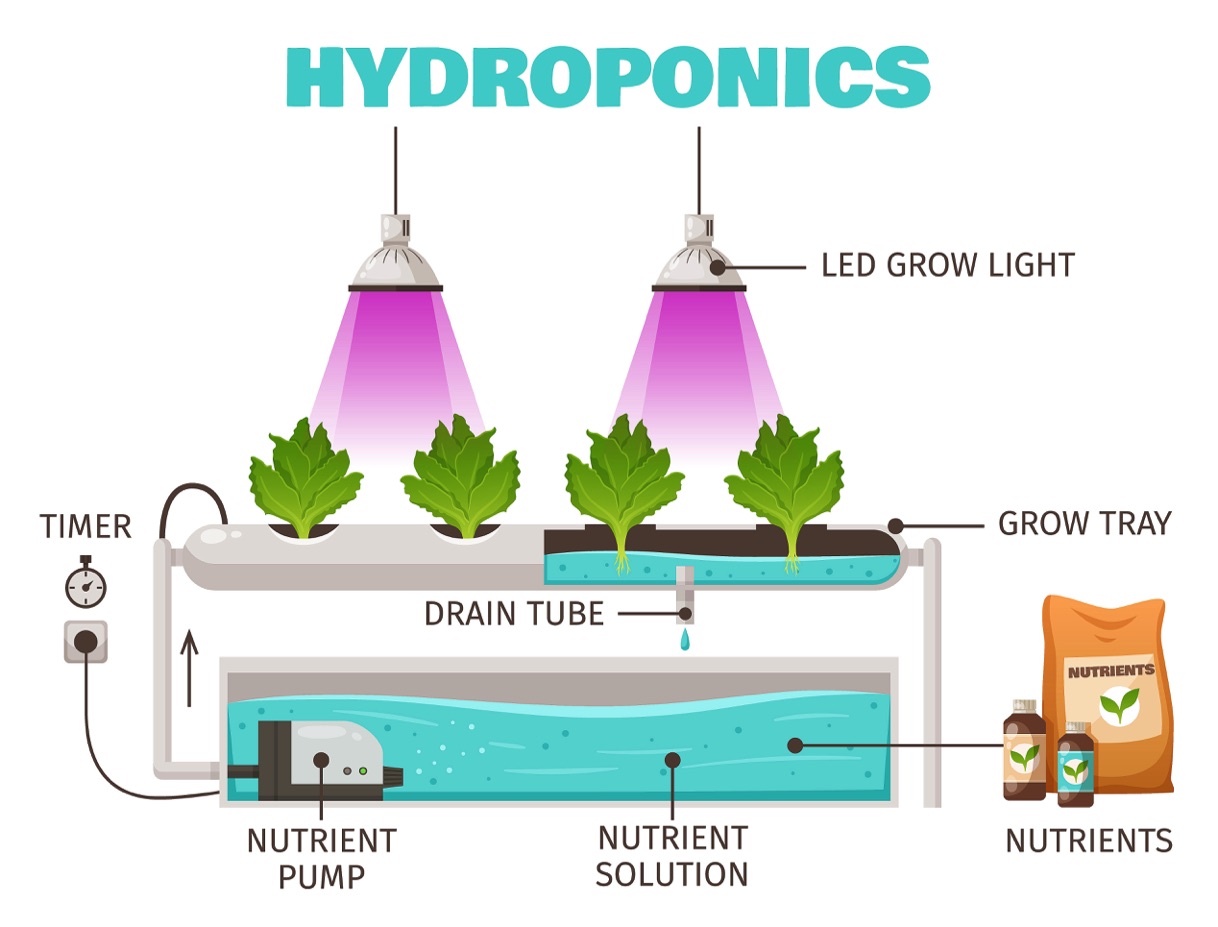
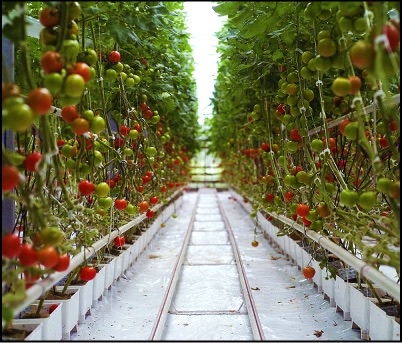
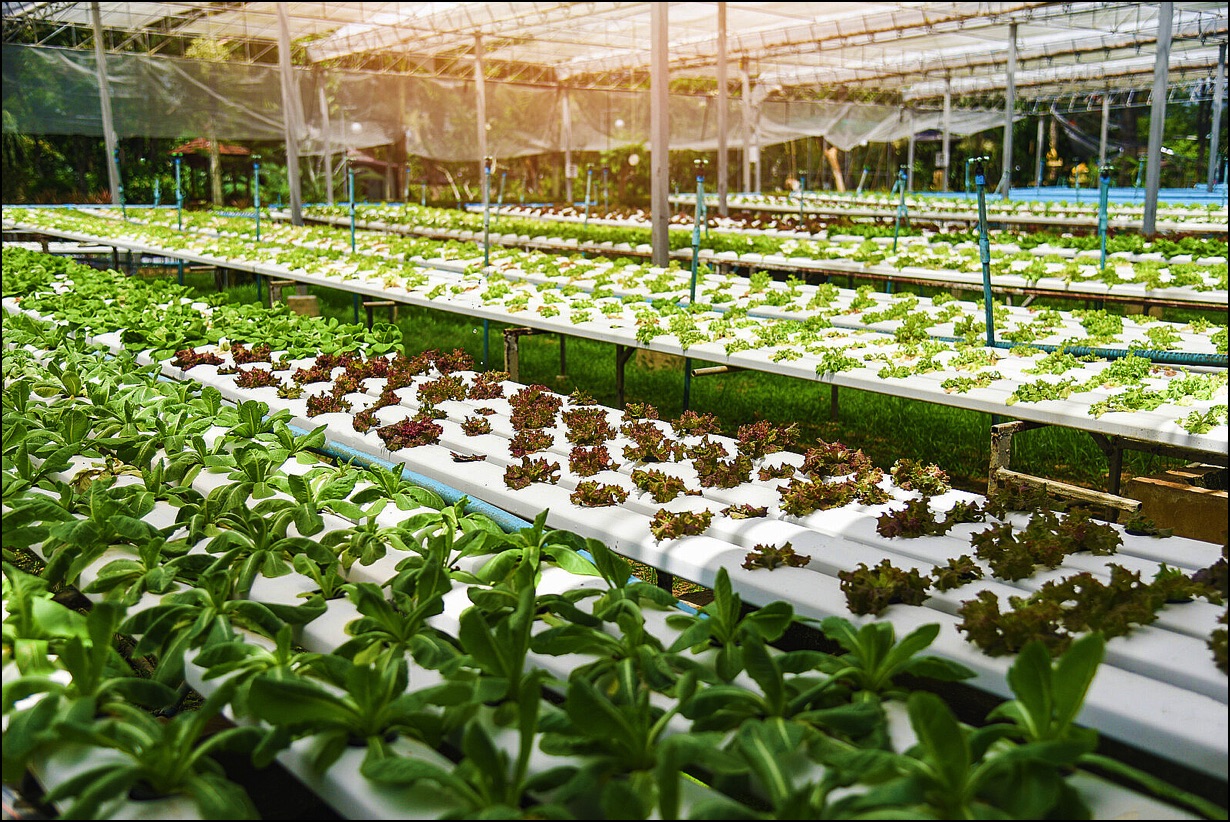
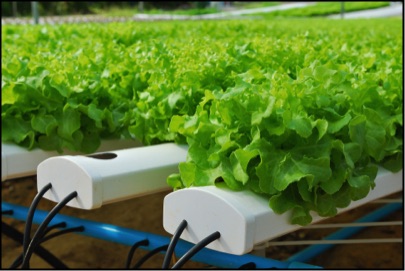
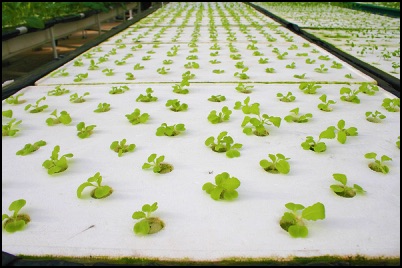
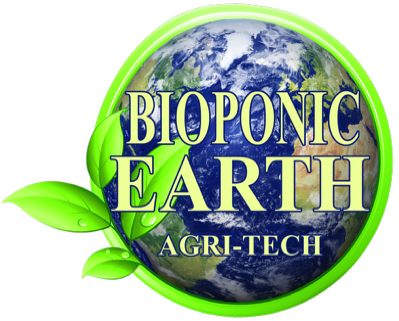
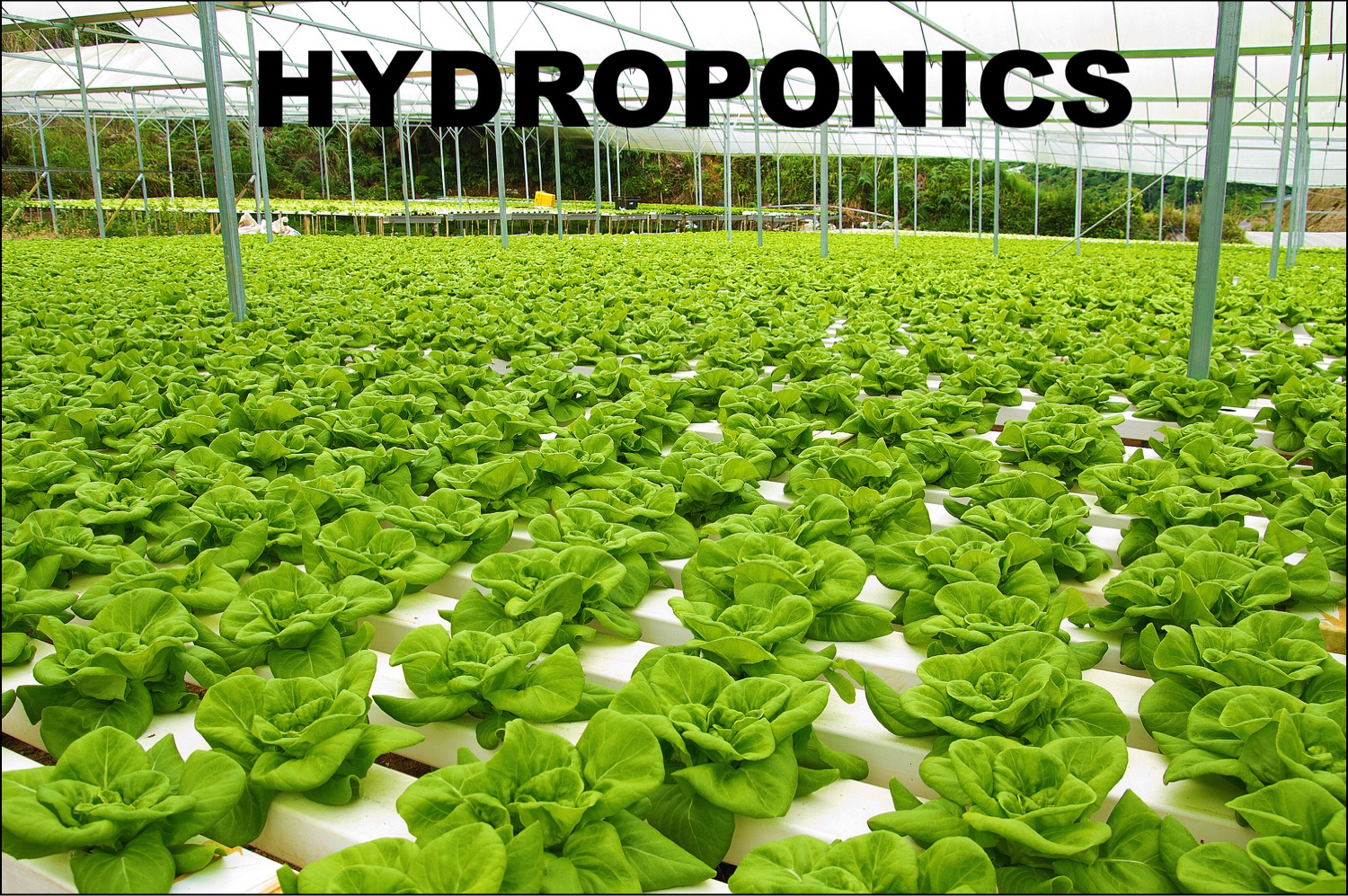
Hydroponics isn't new. In fact, it's been around as far back as the 11th and 12th Centuries. But the Agri-Tech around Hydroponics is devel- oping fast, and Aquaponics System Designers have no qualms about borrowing anything that isn't nailed down with a Patent. That's one of the reasons there's such confusion around the words "Hydroponics" and "Aquaponics". Aquaponics Farmer/Entrepreneaurs use Hydroponic Grow Beds that they fertilize with fish effluent instead of Hydroponic Chemicals. That's the main difference. Therefore, everything said here about Hydroponically grown plants also applies to Aquaponics when it comes to plant density, root health and behavior, taste, etc.
BioPonic Earth uses Hydroponic Flood and Drain Grow Beds, which are staples in the Hydroponic Field, but we have improved on them considerably, which you will discover when you sign our NDA and read "How A Food Forever Farm System Works. We also use NFT Hydroponic Systems, which our System Engineer also improved upon turning these Systems into proprietary Patent Pending designs. We don't recommend building a Food Growing Facility using Hydroponics Systems during times of Food Shortages because Hydroponics only grows one type of edible crop that includes vegetables and fruits. Here's where Aquaponics has all the advantage because it grows out two types of edible crops, vegetables and fruits and Food Fish for portein!
We would love to help you design and build a BioPonic Earth Food Forever Farm. Just give us a Call at 760-671-3053.